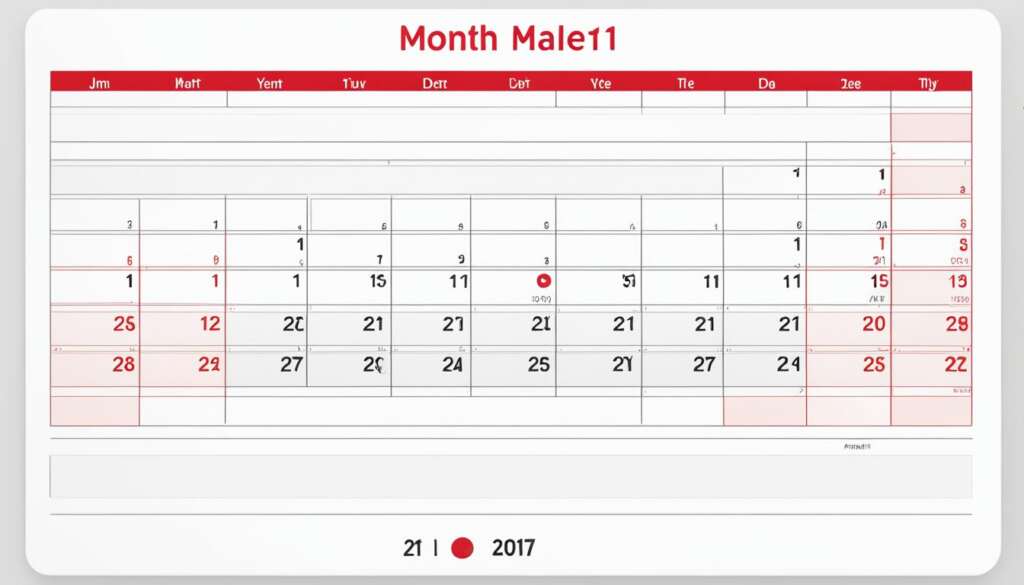Table of Contents
Stay up to date with the latest information on the release of ChatGPT 4, the highly anticipated next-generation AI language model from OpenAI. As the excitement builds among AI enthusiasts, developers, and users, one burning question remains: when will ChatGPT 4 be available?
OpenAI CEO, Sam Altman, has officially announced that ChatGPT 4 is set to launch in March 2023. This news has sparked a wave of anticipation and speculation about the exciting updates and improvements that this powerful AI chatbot will bring.
Since the previous version, GPT-3.5, became the default choice for free users, both GPT-3.5 and ChatGPT have undergone multiple updates. Furthermore, OpenAI has introduced a new iterative version accessible through the ChatGPT API, known as the GPT-4 API.
Designed to surpass its predecessor in performance and capabilities, ChatGPT 4 has positioned itself as a formidable competitor to Microsoft Bing Chat and Google Bard. The race is on to see which AI model will make its grand entrance first.
Join us as we explore the release date, updates, and other exciting details surrounding ChatGPT 4. Keep an eye out for the latest news, announcements, and developments in the world of AI language models. Subscribe to our newsletter to stay informed and be among the first to experience the power of ChatGPT 4.
Features and Capabilities of GPT-4
In the world of AI language models, GPT-4 stands out for its impressive features and capabilities. With its latest update, GPT-4V, ChatGPT now possesses powerful multimodal capabilities that include computer vision and image processing capabilities.
One of the notable features of GPT-4 is its ability to process image inputs, making it a truly multimodal AI model. This means that ChatGPT can now not only understand and generate text but also interpret and generate images based on user inputs. The integration of DALL-E 3, a leading AI image generator, has enabled ChatGPT to excel in visual functionality.
GPT-4’s image processing capabilities have been made available to all ChatGPT Plus and ChatGPT Enterprise users. These users can now leverage the power of GPT-4 to process images and generate image outputs, expanding the capabilities of their AI-powered applications and services.
To further enhance the capabilities of GPT-4, OpenAI has introduced GPT-4 Turbo. This update includes a new training dataset that extends up to April 2023, ensuring that GPT-4 is equipped with the latest information available. By incorporating this extensive training data, GPT-4 Turbo enhances the performance and accuracy of the language model.
In addition to its multimodal capabilities, GPT-4 takes advantage of the “Browse with Bing” feature, allowing ChatGPT to browse the web and provide users with access to real-time events and information outside of its original training data. This integration with Bing expands the knowledge base of ChatGPT and enhances its ability to provide up-to-date and relevant information to users.
GPT-4 is a significant leap forward in AI language models, offering advanced multimodal capabilities and improved performance. Its image processing abilities and integration with Bing make it a versatile tool for various applications and use cases.
Let’s delve deeper into the performance and parameters of GPT-4 in the next section.
| Features | Capabilities |
|---|---|
| Multimodal AI | Enables image processing |
| Image Input | Processes image inputs |
| Image Output | Generates image outputs |
| Browse with Bing | Accesses real-time events and information |
Performance and Parameters of GPT-4
GPT-4, the latest iteration of OpenAI’s language model, has demonstrated exceptional performance in answering exam questions intended for humans. It achieved an impressive score in the 90th percentile for the Uniform Bar Exam, showcasing its capability to comprehend and respond to complex queries.
Compared to its predecessor, GPT-3.5, GPT-4 boasts over 1 trillion parameters, signifying a substantial increase in computational power. These parameters serve as the building blocks for the model’s understanding and generation of language, allowing for more nuanced and contextually accurate responses.
“Each new model from OpenAI improves upon its predecessor by an order of magnitude,” affirms OpenAI CEO Sam Altman, dismissing rumors about the model size of GPT-4.
GPT-4 has also proven its aptitude on standardized tests, achieving high scores in renowned exams such as the SAT and LSAT. This showcases the model’s capability to grasp and provide intelligent insights on a wide range of topics, making it a valuable tool for educational applications and test preparation.
Performace Comparison: GPT-4 vs GPT-3.5
| Model | Parameters | Exam Scores |
|---|---|---|
| GPT-4 | Over 1 trillion | High scores on exams such as SAT and LSAT |
| GPT-3.5 | Not specified | N/A |
(Table: Performance and Parameters of GPT-4 and GPT-3.5)
GPT-4 surpasses its predecessor, GPT-3.5, in both performance and parameter count. With its enhanced capabilities, GPT-4 offers expanded possibilities for natural language understanding and generation, making it a valuable resource for various applications.
Continue reading the next section to explore the wide range of applications and use cases for GPT-4.
Applications and Use Cases of GPT-4
GPT-4, the latest generation of AI language models, offers a multitude of applications across different fields. Its advanced capabilities make it a valuable tool for various purposes. Let’s explore some of the key applications and use cases of GPT-4:
Coding Assistant
GPT-4 serves as an excellent coding assistant, providing developers with valuable support in identifying errors and optimizing code performance. With its deep understanding of programming languages, GPT-4 can offer suggestions, troubleshoot issues, and improve the overall coding experience. By leveraging GPT-4’s coding assistant capabilities, developers can save time and enhance their productivity.
Medical Use Cases
GPT-4 shows promise in the medical field, where its powerful AI capabilities can assist with medical inquiries and the analysis of medical records. It can help healthcare professionals access relevant information, make accurate diagnoses, and provide personalized patient care. The integration of GPT-4 in medical settings has the potential to revolutionize healthcare by improving efficiency and enhancing patient outcomes.
AI Apps Development
GPT-4 opens up exciting opportunities for the development of AI applications. With its advanced language understanding and generation capabilities, GPT-4 can be utilized to create innovative AI apps that deliver personalized experiences to users. Whether it’s chatbots, virtual assistants, or language-based AI tools, GPT-4’s powerful API enables developers to build intelligent and interactive applications that cater to various user needs.
Assistants API
The GPT-4 Assistants API provided by OpenAI empowers developers to build agent-like experiences within their applications. This API offers a range of features, including Code Interpreter, Retrieval, and function calling, which enable developers to handle complex tasks seamlessly. By utilizing the GPT-4 Assistants API, developers can access the full potential of GPT-4’s capabilities and create AI-powered applications that provide intuitive and intelligent interactions.
“GPT-4’s coding assistant capabilities streamline the development process, helping programmers identify and fix errors quickly.”
In summary, GPT-4’s applications span diverse domains, ranging from coding assistance to medical use cases and AI app development. With its powerful features and the availability of the GPT-4 Assistants API, GPT-4 opens up new possibilities for developers, researchers, and professionals across industries.

| Applications | Use Cases |
|---|---|
| Coding Assistant | Optimizing code, error detection |
| Medical Use Cases | Medical inquiries, record analysis |
| AI Apps Development | Chatbots, virtual assistants, language-based AI tools |
| Assistants API | Creating agent-like experiences, handling complex tasks |
Conclusion
GPT-4 represents a significant breakthrough in language models, showcasing its impressive multimodal capabilities, enhanced performance, and expanded parameters. This cutting-edge model is now accessible to ChatGPT Plus and ChatGPT Enterprise users, providing them with an unprecedented AI chatbot experience.
While GPT-4 sets a new benchmark, OpenAI is not resting on its laurels. The company is actively working on further enhancing its models, with GPT-5 scheduled for release in 2024. This commitment to continuous improvement ensures that the future of AI language models remains bright and promising.
With GPT-4, OpenAI has opened the door to a new era in AI language understanding and generation. As this technology advances, we can anticipate even more remarkable developments and applications in various domains. It is essential to keep an eye on OpenAI’s future updates and improvements, as they will undoubtedly shape the landscape of AI.
FAQ
When will ChatGPT 4 be released?
ChatGPT 4, also known as GPT-4, was released in March 2023.
What are the features and capabilities of GPT-4?
GPT-4 introduces multimodal capabilities with its GPT-4V update, allowing for image inputs and image output. It also has the ability to browse the web via the “Browse with Bing” feature.
How does GPT-4 perform compared to GPT-3.5?
GPT-4 has over 1 trillion parameters, showing a significant increase in power compared to GPT-3.5. It has achieved high scores on standardized tests such as the SAT and LSAT.
What are the applications and use cases of GPT-4?
GPT-4 has a wide range of applications, including coding assistance, medical question analysis, and building agent-like experiences with the Assistants API. It is useful in various domains.
What can we expect from the future of AI language models?
While GPT-4 sets a new standard, OpenAI continues to improve its models and is already planning the release of GPT-5 in 2024. The future of AI language models looks promising with ongoing updates and improvements.













